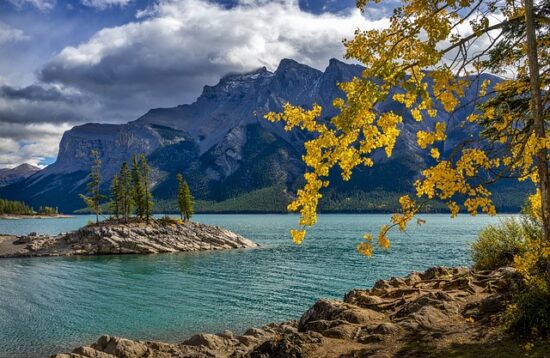The Rocky Mountain National Park lies in the northern Colorado. It is thought to occupy 1,040 square kilometers of land. The park offers one of the magnificent hiking trails that include alpine lakes, flower-studded valleys, and summer assaults which can be challenging even for expert climbers. Every year it attracts more than 3 million visitors. It is the highest park in the United States.
Rocky Mountain National Park Facts
Geography
The elevation between the highest summit and the valley floor is about 6,000 feet. If a mountaineer hikes 1,000 feet he feels a drop in temperature of about 3o F. On land however the difference of 3o F is typically experienced when one travels 600 miles northward.
There are three climate zones of the national park. These are montane (7,000 – 9,500 feet), subalpine (9,500 – 11,000 feet), alpine (above 11,000 feet).
The total area of the Rocky Mountain National Park is about 265,761 acres (1,075.50 km2). The western side of the park is more likely to be green and wet as compared to the eastern side which is dry. There are dense forests in the western side of the park.
The total area of all trails is 578 km while streams cover 720 km.
The park contains as many as 150 total lakes and 72 peaks.
Long Peak is the highest peak with the height averaging 14,259 feet (4,346 m) above sea level.
The park also offers many glaciers along with snowfields that remain white all year round. This includes Moomaw Glaciers, Tyndall, Rowe, Andrews, Mills, Taylor, and Sprague.
Depending on the altitude each mountain receives annual precipitation of less than 20 inches. The western mountains receive more rainfall than the eastern slope.
 Wild Plants
Wild Plants
The Rocky Mountain National Park is home to a wide variety of plants and animals. There are flowers all over the tundra that welcomes the summer as well as spotted coralroot that grows along the way.
Park also contains many woody plants but it is mainly rich in conifers. Prominent among conifers are the lodgepole pine, the Englemann spruce, the Colorado blue spruce, the picturesque limber pine, and the ponderosa pine.
Douglas fir is also found in large numbers. These true firs add to the beauty of the park.
While the park is abundant in conifers, it nevertheless offers magnificent deciduous trees and shrubs especially those that lie below 9,500 feet. These trees include cottonwoods, balsam poplars, and willows.
The mountain ash is also found in the park. During spring white flowers are seen and in fall scarlet berries grow everywhere. In autumn red-twigged dogwoods, mountain maple, shrubby willows, and river birch cover the snowy landscape.
Flowers of the national park are blanketflower, Colorado Columbine, marsh-marigold, groundsel, parry primrose, Cow parsnip, Moss campion. Northern paintbrush, subalpine daisy, wild rose, horse mint, western wallflower, cinquefoil, and pearly everlasting.
 Wild Animals
Wild Animals
One cannot ignore the overwhelming contribution of wild animals to the beauty of Rocky Mountain National Park. The calls of different birds move along the wind ranging from mountain chickadee, white-tailed ptarmigan, to a large golden eagle. Other birds that breed along the park are Steller’s jay, gray jay, wrens, assorted sparrows, warblers, juncos, hard-headed hammers, mad-cap hammers, daffy dippers, and Clark’s nutcracker.
The park is also home to many medium-size mammals. Common among these animals are deer, elk, coyote, and fox. They are likely to be found at dusk and at low altitudes. Bighorn sheep may be seen at higher peaks. Yellow-bellied marmot and pika are also found along the Chasm Lake.
Some of the squirrels and chipmunk species are also found in the park. Animals such as mountain lions and black bears are seen in rarity.
Although there are dense forests in the park yet it does not have a single poisonous snake.
Climate of the Rocky Mountain National Park
The hottest months on the national park are July and August. Thunderstorms also occur but they mainly appear above the tree line. Heavy snow falls from October to April.
Snow is deep at a height of about 9,000 feet above the sea level and it remains there throughout the year. However at lower elevations the snow mostly melts during summer.
Cool Facts about the Rocky Mountain National Park
The only lake that lies in the heart of the national park is Bear Lake. It is also the most familiar tourist resort.
The national park has been attracting tourists for as early as 11,000 years ago.
Learn more at : Colorado Facts for Kids
Leave a Reply